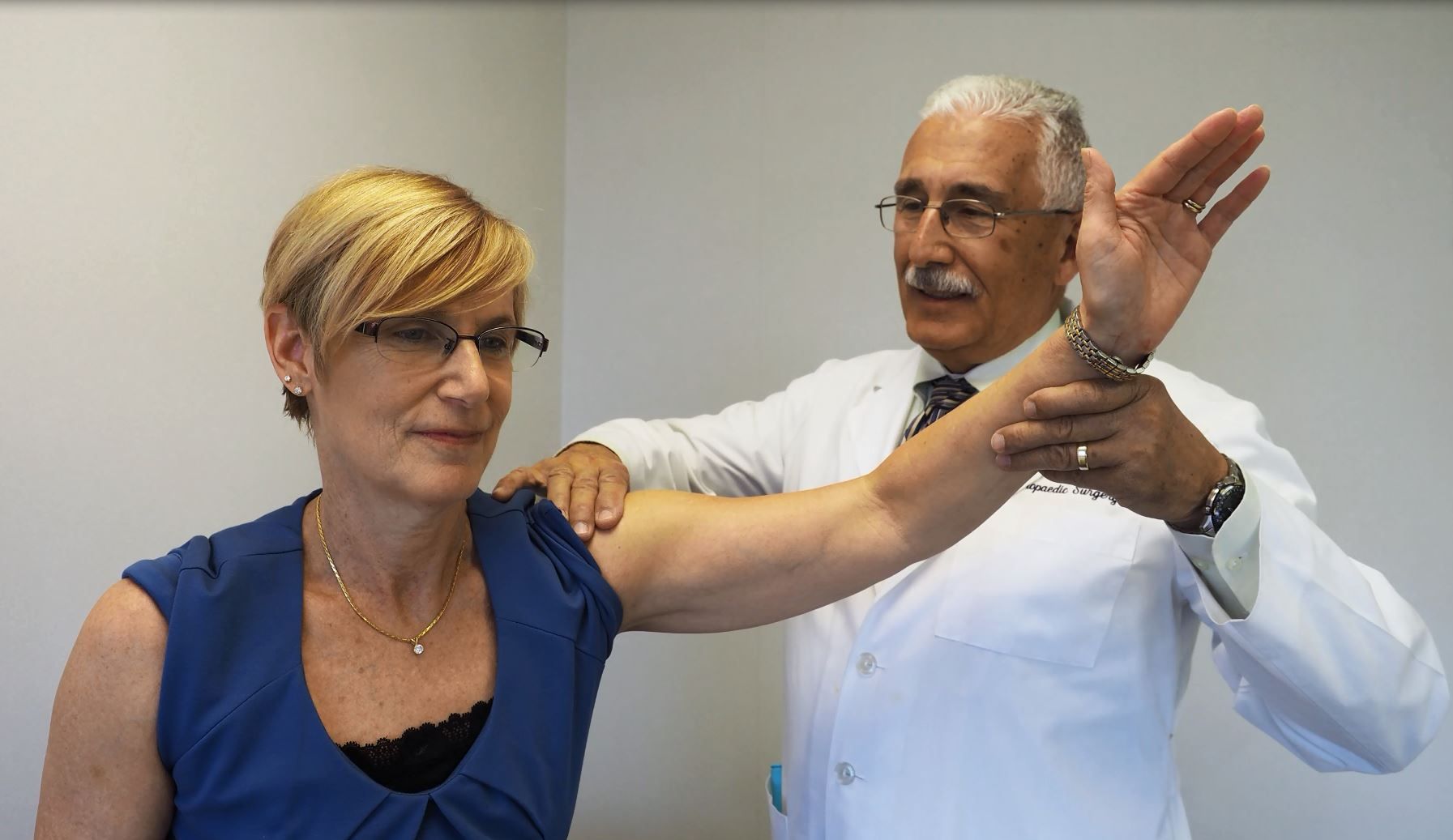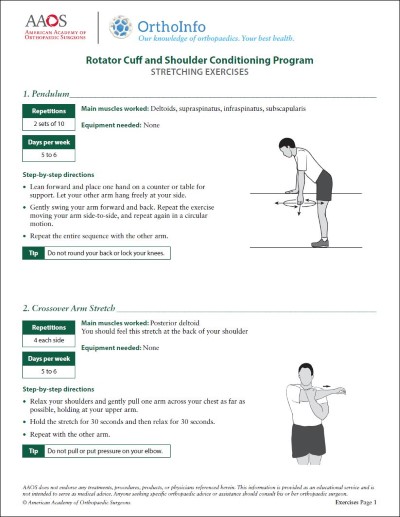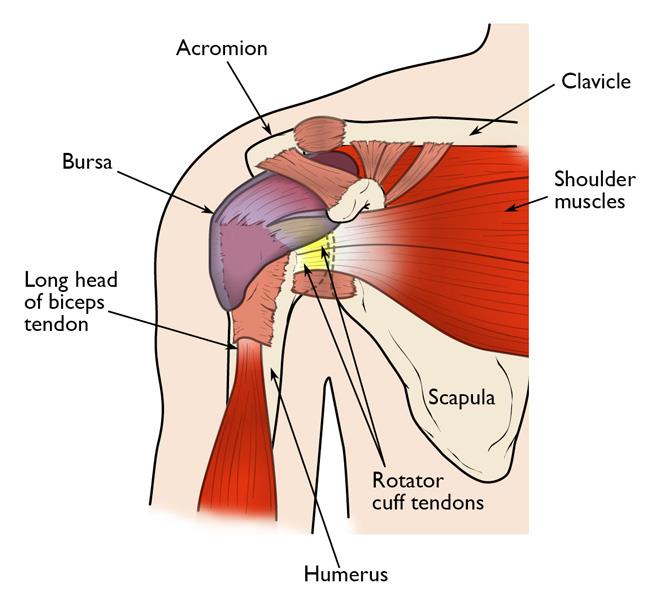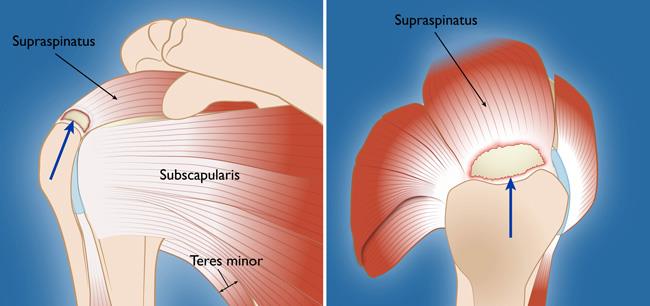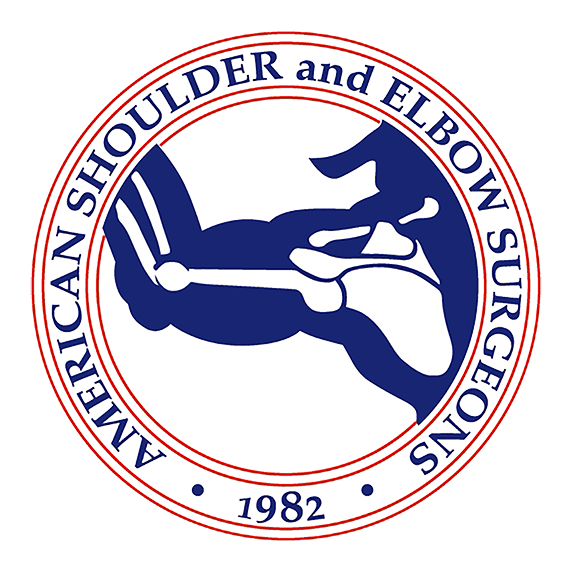Diseases & Conditions
Rotator Cuff Tears: Frequently Asked Questions
What is the rotator cuff, and what does it do?
The shoulder is a ball-and-socket joint: The head of the humerus (upper arm bone) is the “ball” that fits into a shallow “socket” in the scapula (shoulder blade).
The rotator cuff is a group of four muscles that come together as tendons to form a "cuff," or cover, over the head of the humerus (upper arm bone).
- The four muscles — supraspinatus, infraspinatus, subscapularis and teres minor — originate from the scapula (shoulder blade).
- The rotator cuff tendons attach to the head of the humerus in specific areas of the bone referred to as the greater and lesser tuberosities.
The rotator cuff helps lift and rotate the arm, while also stabilizing the head of the humerus within the joint.
What causes a rotator cuff tear, and how would I know if I have one?
A rotator cuff tear may result from an acute injury, such as a fall, or may be caused by normal aging-related wear and tear with degeneration of the tendon.
- Typically, you will feel pain in the front or side of your shoulder that radiates (travels) down the side of your arm. It may be present with overhead activities such as lifting or reaching (e.g., serving in tennis, throwing a ball, grabbing an item out of a high cabinet).
- You may feel pain when you try to sleep on the affected side.
- You may note weakness of your arm and difficulty with routine activities, such as combing your hair or stretching your arm behind you into a coat sleeve.
- If the tear occurs with injury, you may experience acute pain, feel or hear a pop, and notice immediate weakness of the arm.
If I have a painful rotator cuff and keep using it, will this cause further damage?
A rotator cuff tear can extend or get larger over time. This can occur normally over time, or with repetitive use or a re-injury.
It is common for patients who have been diagnosed with a rotator cuff tear to experience acute pain and weakness following a minor shoulder injury. When this happens, it likely means further tearing of the existing tear. This may be referred to as an acute or chronic tear.
If you know you have a rotator cuff tear, worsening pain and decreasing strength may mean the tear is getting larger.
When should I see a doctor for a rotator cuff tear?
If you have injured your shoulder or have chronic (ongoing) shoulder and arm pain, it is best to see an orthopaedic surgeon. They can then make a diagnosis and begin treatment. Your doctor may recommend a diagnostic imaging test such as X-rays, a magnetic resonance imaging (MRI) scan, or ultrasound to confirm the diagnosis.
Early diagnosis and treatment of a rotator cuff tear may prevent symptoms such as loss of strength and/or loss of motion.
If your primary physician has already made the diagnosis, an orthopaedic surgeon can review both surgical and nonsurgical options, and start treatment.
Can a rotator cuff tear heal or be strengthened without surgery?
The majority of rotator cuff tears can be treated nonsurgically using one or more of these treatments:
- Anti-inflammatory medications
- Steroid (cortisone) injections
- Physical therapy
The goals of treatment are to relieve pain and restore strength to the affected shoulder.
Even though most tears cannot heal on their own, you can often achieve good function without surgery. This is because there are many other muscles and tendons that help move the arm.
If, however, you are active, relatively young, or use your arm for overhead work or sports, surgery is most often recommended because many tears will not heal without surgery.
At what point does a rotator cuff tear require surgery?
Surgery is recommended:
- If you have persistent (ongoing) pain or weakness in your shoulder that does not improve with nonsurgical treatment, including a dedicated course of physical therapy
- In active individuals who use the arm for overhead work or sports, such as throwers (e.g., baseball pitchers), swimmers, tennis and volleyball players, construction workers, painters, and electricians
- Sometimes, for complete tears that are acute (i.e., due to a specific traumatic event)
What options are available for surgical repair?
The type of repair performed is based on the findings at surgery.
- A partial tear may require only a trimming or smoothing procedure called a debridement.
- A full-thickness tear, which usually means the tendon is torn from its attachment point on the humerus (the most common injury), is repaired (stitched) directly to the bone.
Rotator cuff repairs are usually performed arthroscopically (i.e., using small cuts [portals]); however, this can also be performed as an open procedure if necessary. Your orthopaedic surgeon will discuss which technique is best for you.
How important is rehabilitation in the treatment of a rotator cuff tear?
Rehabilitation plays a critical role in both the nonsurgical and surgical treatment of a rotator cuff tear.
When a tear occurs, there is frequently atrophy (wasting or weakening) of the muscles around the arm and loss of motion of the shoulder. An exercise or physical therapy program is necessary to regain strength and improve function in the shoulder.
After surgery, the repair must be protected from certain activities that may put healing at risk. As such, a physical therapist can provide a safe and progressive therapy program.
Even though surgery repairs the defect in the tendon, the muscles around the arm remain weak, and a strong effort at rehabilitation is necessary for a successful outcome. Complete rehabilitation after surgery may take several months or even up to a year.
Your orthopaedic surgeon can prescribe an appropriate program based on your needs and the findings at surgery. They might, for example, have you do some or all of the exercises in our Rotator Cuff and Shoulder Conditioning Program (IMPORTANT: Do not attempt these exercises without first consulting with your doctor and/or physical therapist).
To assist doctors in the management of rotator cuff tears, the American Academy of Orthopaedic Surgeons has conducted research to provide some useful guidelines. These are recommendations only and may not apply to every case: Plain Language Summary - Clinical Practice Guideline - Management of Rotator Cuff Injuries - AAOS and Clinical Practice Guideline - Management of Rotator Cuff Injuries
Contributed and/or Updated by
Peer-Reviewed by
AAOS does not endorse any treatments, procedures, products, or physicians referenced herein. This information is provided as an educational service and is not intended to serve as medical advice. Anyone seeking specific orthopaedic advice or assistance should consult his or her orthopaedic surgeon, or locate one in your area through the AAOS Find an Orthopaedist program on this website.







